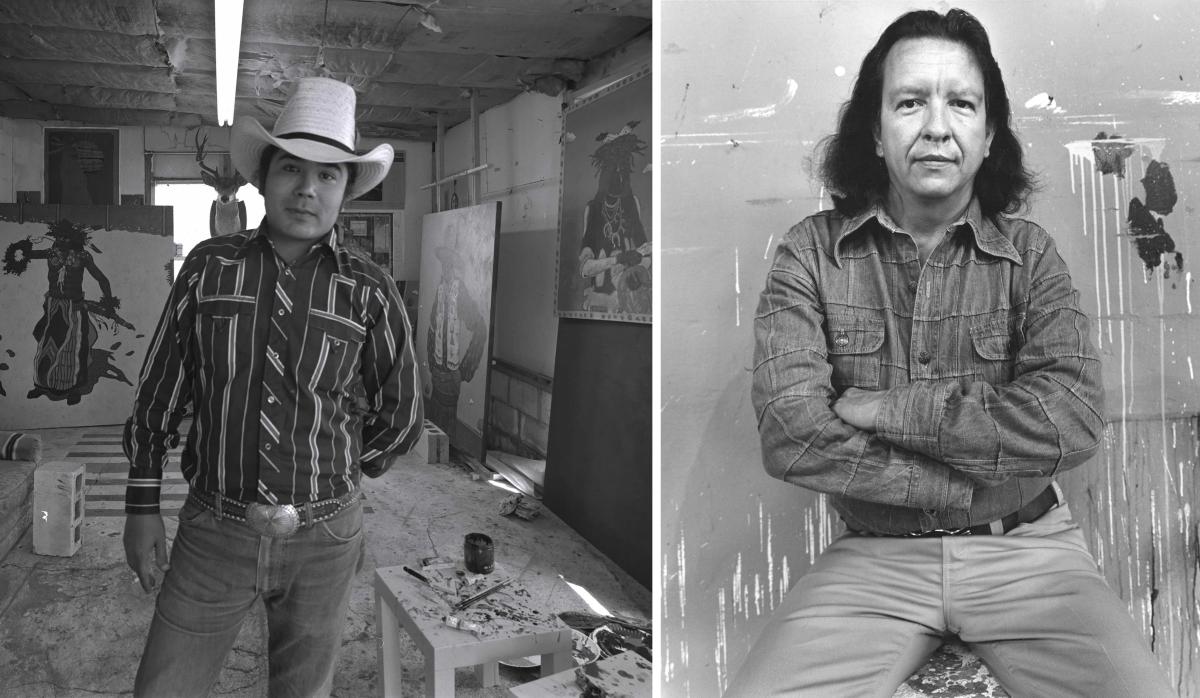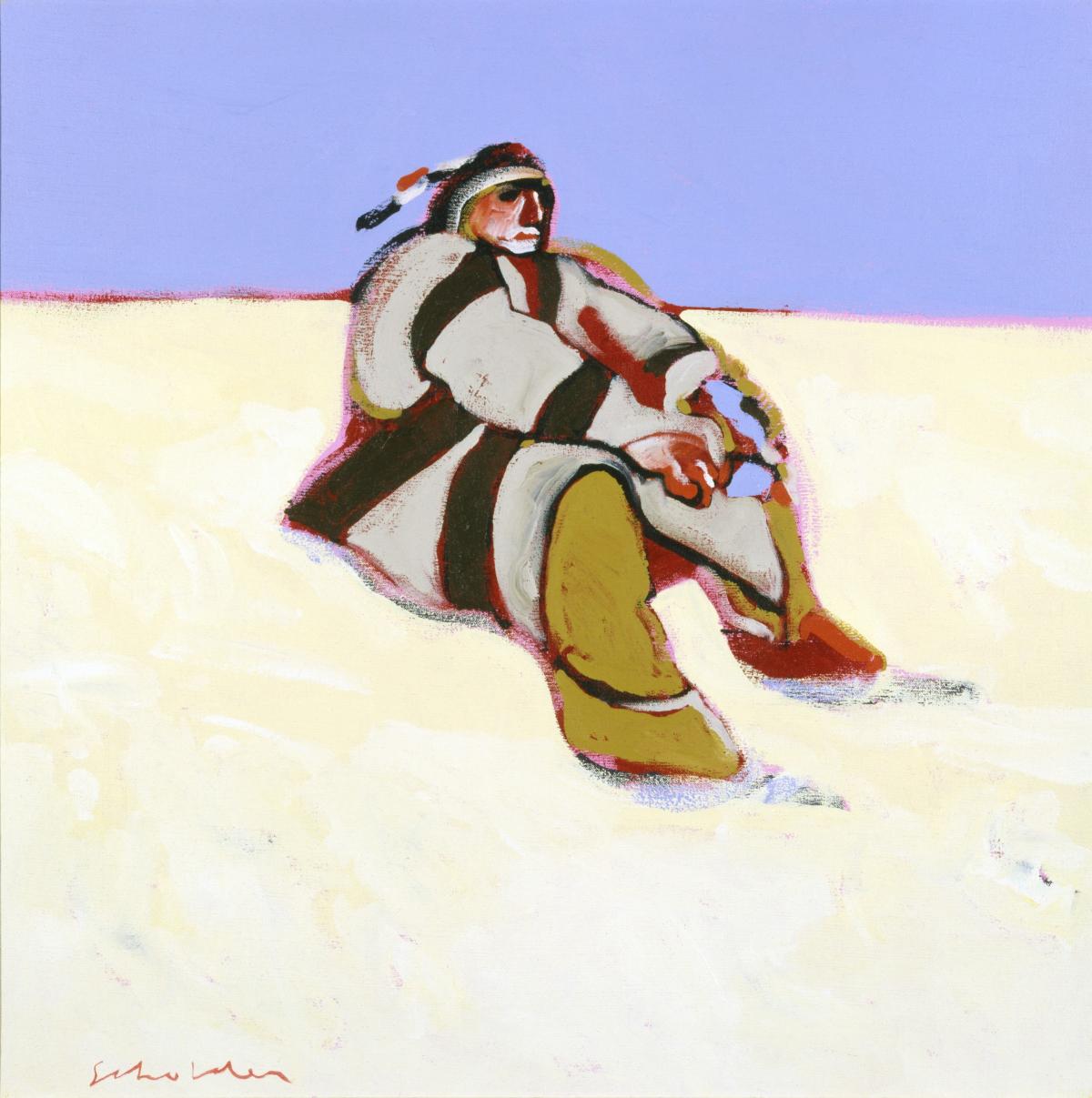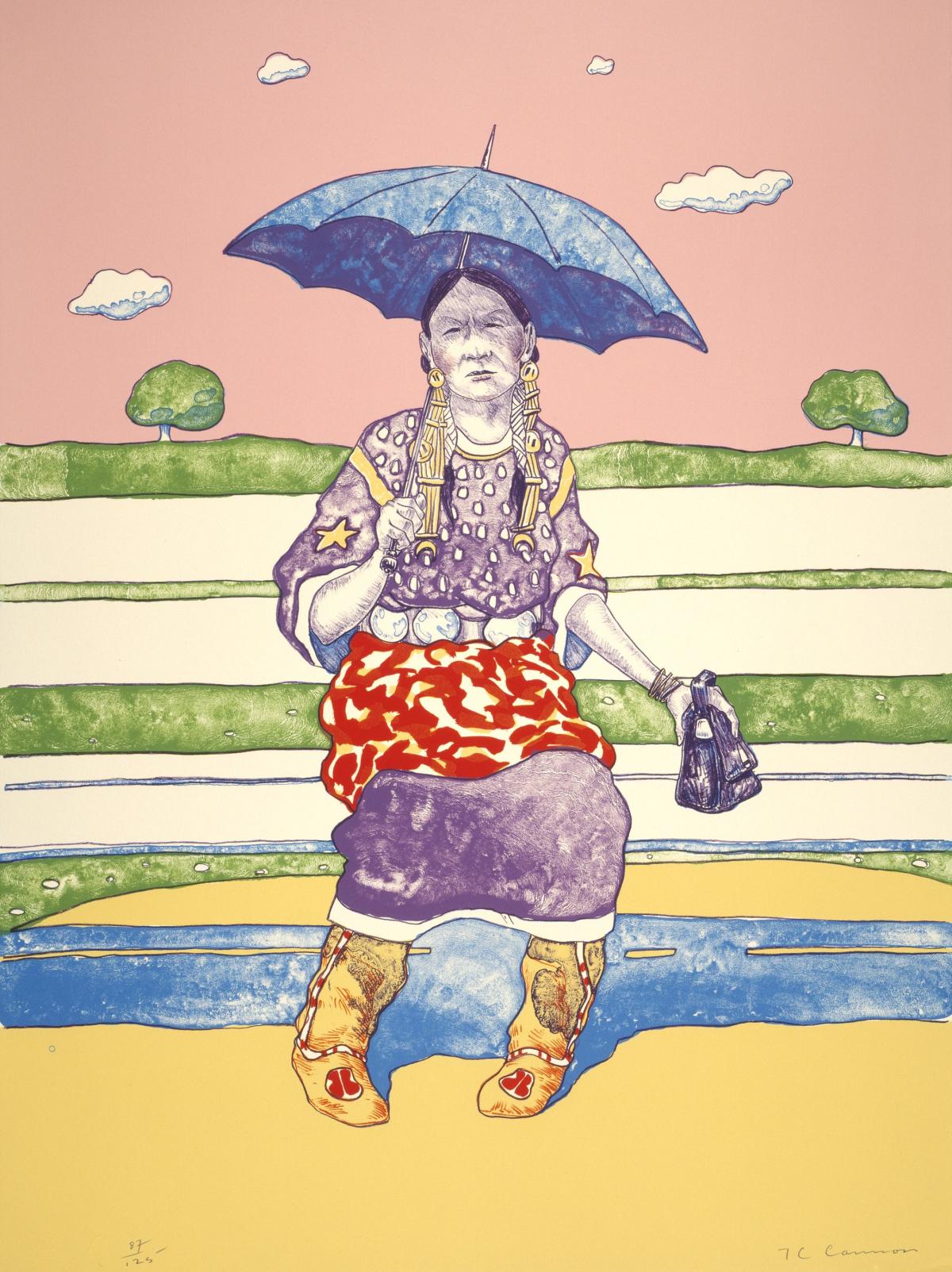T.C. Cannon and Fritz Scholder were key participants in the early years of the Institute of American Indian Arts (IAIA), founded in 1962 in Santa Fe, New Mexico. In a radical departure for schools run by the Bureau of Indian Affairs, IAIA encouraged students to both embrace their Native backgrounds and push beyond established styles of Indian art. Cannon was among a group of students who initiated a genre often described as New Indian art. They approached Native imagery in audaciously non-stereotypical fashion, drawing inspiration from pop culture and contemporary painting. Scholder, who was their teacher, first resisted this approach but later relented and went on to receive great acclaim for his boldly expressionistic paintings of American Indians.
In 1972, the National Collection of Fine Arts (now the Smithsonian American Art Museum) selected Scholder for an exhibition. He in turn invited Cannon, his former student, to join him. The result was Two American Indian Painters, which bolstered Scholder’s reputation and earned Cannon new critical attention and gallery support. While the works presented here were not part of that exhibition, they represent each artist’s contemporary style. Scholder’s luscious, loose brushwork and vivid color reflect his background as an abstract painter, while Cannon uses a complex mix of imagery to address American culture through a Native lens. His Anadarko Princess wears buckskin moccasins and holds an umbrella while waiting for the bus, defying predictable exoticized depictions of Native women. “Anadarko” refers to a town in Cannon’s home state of Oklahoma named after the Nadaco (or Anadarko) tribe, who were indigenous to what is now Texas but were forced to relocate and are today part of the Caddo Nation in Oklahoma.
This story is based on text created for SAAM’s special exhibition Artist to Artist that features paired artworks, each representing two figures whose trajectories intersected at a creatively crucial moment, whether as student and teacher, professional allies, or friends.






















